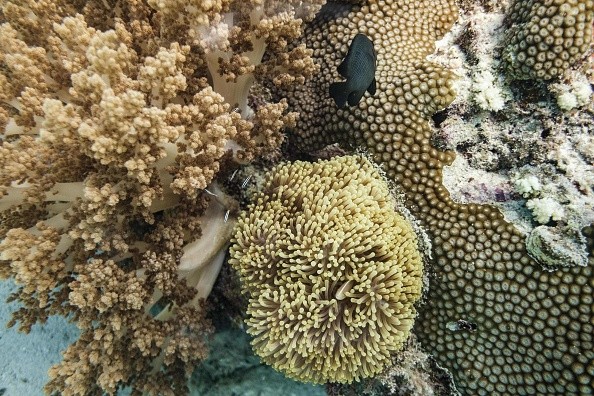Climate change destroys the world's corals, but removing seaweed, similar to weeding a garden, can help certain reefs thrive.

"Every year, there are more and more coral babies," says Hillary Smith of James Cook University in Australia, a National Geographic explorer and environmentalist.
That's because of "seaweeding," a simple but efficient approach for cleaning the region's coral reefs. Seaweeding is picking huge handfuls of giant algae-in this case, sargassum seaweed-off reefs and carting them away, much like weeding a garden.
Seaweeds vs Corals

Weeds can absorb more than their fair share of water and sunshine when growing in garden soil, slowing flower growth. Coral reefs, which have been weakened by human activities such as pollution and rising water temperatures, can be overwhelmed by seaweed, making it difficult for corals to survive.
Experts agree that controlling climate change is the most effective way to keep the world's reefs healthy. Local restoration initiatives, such as seaweeding, can assist increase corals in the meanwhile. While cleaning all of the reefs that need it would require a small army of citizen scientists, Smith says his study suggests there's promise in scaling up the cleaning efforts to local coastal communities that rely on healthy reefs for tourism and fishing.
Coral Study
Smith and her colleagues recently published their findings in Restoration Ecology, a peer-reviewed magazine. According to the researchers, cleaning the corals on the Great Barrier Reef led to a threefold rise in the number of new coral babies, also known as recruits, in both 2019 and 2020.
Smith and her colleagues recently published their findings in Restoration Ecology, a peer-reviewed magazine. According to the researchers, cleaning the corals on the Great Barrier Reef led to a threefold rise in the number of new coral babies, also known as recruits, in both 2019 and 2020.
Coral reefs throughout the world are in bad shape. According to a 2020 estimate by the Coral Reef Monitoring Network, 95 percent of the world's coral might be exposed to heat stress by 2050. Algae is a major issue: algae have already grown on two-thirds of the world's reefs, and research released in 2021 indicated that half of the world's coral has died since the 1950s.
Seaweed removal from reefs is time-consuming but not difficult, making it a perfect activity for citizen scientists wanting to assist in the restoration of deteriorated reefs.
"We're incredibly enthusiastic about this sort of activity," says Fiona Wilson, CEO of Earthwatch Institute, an environmental citizen science organization whose volunteers have assisted in the removal of seaweed. "This is a viable and low-tech technique to aid reef regeneration, which is quite exciting for reefs all across the world."
Wilson also sees citizen science as a valuable method for reducing climate fear and despair. "We're linking people to the most pressing problem of our day," she adds. "Action is the only remedy to this near-fatal calamity."
Seaweeding Corals

Magnetic Island, often known as Maggie, is a 19-square-mile island national park located five miles off the Queensland coast in the Coral Sea. Across from Maggie, on the mainland, is Townsville, which stands at the mouth of a river and is home to an important port. Human activity and pollution in run-off have created undersea circumstances in the area that are more conducive to strong seaweed than fragile coral over the twentieth century.
Continued pollution and rising seas due to climate change are still a source of stress for the environment, and the reefs around Magnetic Island have been designated as some of the most degraded in the Great Barrier Reef system, according to Smith. They are, nonetheless, among the most accessible reefs in the system due to their position.
For more Environmental News, don't forget to follow Nature World News!
© 2025 NatureWorldNews.com All rights reserved. Do not reproduce without permission.





